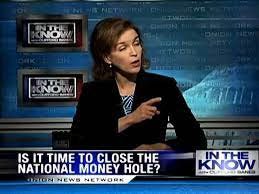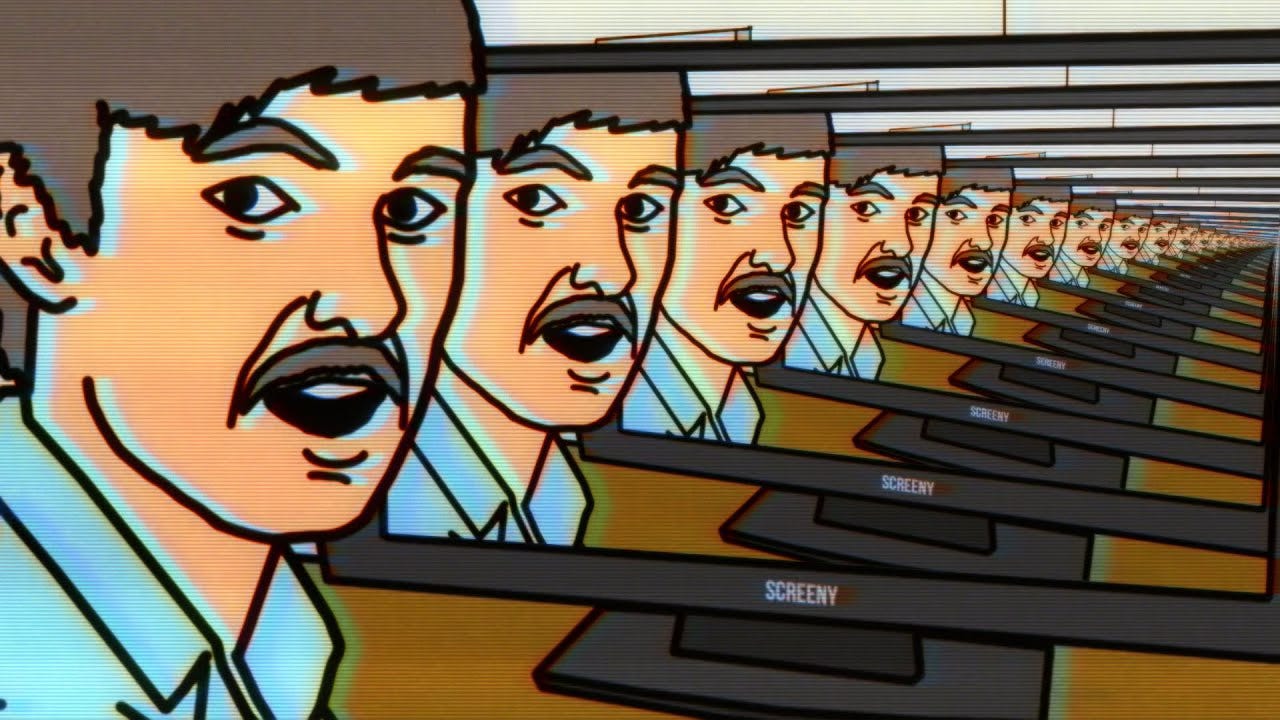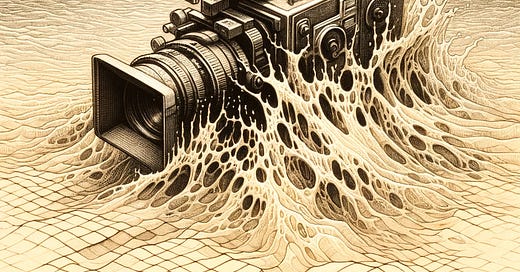Is Hollywood going out with a whimper?
Hollywood already lost its distribution monopoly to social media. Now generative AI is loosening its monopoly on production value too.
For the last decade, Hollywood has been losing its grip on mainstream culture as media diets became diverse, multi-platform, and populated by items Hollywood never put on the menu. Hollywood’s own offerings increasingly resemble a Taco Bell, packaging the same few ingredients into novelty items no one remembers asking for. Recall that 2023 was the year of Fast & Furious 10, Cocaine Bear, and a fifth new Star Wars show Ahsoka.
This exhaustive Star Wars expansion (to character IP far, far, far away) comes at the tail of a 10-year period where the amount of scripted tv shows tripled from 200 to almost 600. In that same time American movies more than doubled from around 580 to over 1350. The result is too much stuff to watch. It’s easier to close the menu after a few pages and just order what you did last time: reruns of The Office. Or fill up on TikTok and skip a meal altogether.
Audiences seem to be losing their appetite for Hollywood extravaganza as many of the industry’s best blockbuster efforts are flopping. The new Indiana Jones earned about $350 million on a $290 million production budget. The Flash only sluggishly crossed $270 million on a $220 million production budget. These are huge losses when you account for marketing budgets (usually another $60-100 million) and the ticket sales split with the theaters. The aggregate numbers on streaming look dismal too. Disney suffered $659 million in losses on Disney+ in just one quarter.
Despite the public’s limp enthusiasm for legacy IP, Hollywood continues to pour cash into even more blockbustery blockbuster recipes. Next year promises new installments in Sonic the Hedgehog, Spiderman, and Transformers. We’ll also get Star Wars TV shows number six and seven.
Meanwhile, a flood of civilian-generated video is added to the menu at the rate of 700,000 hours of new content every day. That’s 80 years worth of video a day. This content is cheap to produce, mostly original, and deliberately prepared for special palettes. And every year the technology gets better, lowering the barrier to entry and raising the overall quality.
A Money Pit Mentality
While technology is lowering the cost of filmmaking for 99% of people, it’s enabling Hollywood to set new spending records every year. The average cost of producing an hour of television is about $3-5 million. More ambitious shows like the recent The Lord of the Rings series manage to spend $80 million per hour.
Film productions are money pits. As soon as you feed the pit, you can’t stop. Production wants more lights. Directors need more explosions. Unions require more assurances. Ironically, technology has only helped companies excavate deeper, more mysterious money pits. Where does the money go? It’s increasingly hard to say.

Money pit mentality is prevalent in filmmaking even at the independent level. Spending money is professionalism. Tell an LA line producer you want to produce a film where two people talk in a room. You will be promptly reprimanded for attempting it with anywhere less than a 12-person crew.
Meanwhile basement entertainers with TikTok filters are executing on the same creative impulse for $0. These filmmakers are no less serious or ambitious for their lack of money. The best of them, like Joel Haver, are making full feature-length, critically acclaimed films on Youtube for the cost of gas.
You can’t help but squint at Hollywood’s business model. Does it make any sense?
A Myth-Powered Monopoly
Hollywood’s old model worked well. Watching was tied to profit. The more popular a movie was, the more people bought tickets, and the more money it made. Television was similar. Popular shows got more viewers which meant the ad space was more valuable.
Then Netflix divorced revenue from popularity by opting for a flat revenue scheme rather than the hit-and-miss model. Whether you watch 1 hour of television or 100 hours, they profit the same amount. A popular show doesn’t really affect the bottom line. It just sorta-maybe keeps you from canceling in a very indirect way that you can’t confirm or deny.
Meanwhile for every additional minute you look at your phone, Google gets an extra dollar. Youtube gets content for free, makes more money on every marginal view, and incentivizes creators by offering them a cut.

It’s difficult to understand how these two systems exist at the same time. And maybe they won’t much longer. Hollywood is modeled on exclusivity and gatekeeping, a dogmatic belief that no one can do what they do. That movies require special equipment, industry expertise, highly scarce talent, and of course, millions of dollars. This myth empowered the industry as a gatekeeper for decades and lured talent from around the world to participate in the Hollywood lottery for low wages and low odds.
This same belief is deluding studios to what is reality for 99% of filmmakers outside of Hollywood: that filmmaking is getting cheaper, distribution is available to anyone with WiFi, and the media landscape is so diluted there’s no such thing as “mainstream culture”. And perhaps most interesting, we’ve discovered talent is abundant across the world and not localized to Southern California.
Rather rapidly, the incumbent studios have lost their monopolistic grip on entertainment. Hollywood’s last defense is production value: it is prohibitively expensive to produce high-end visuals like Marvel. But that’s changing too.
Generative AI’s Promise: Unlimited Production Value
Hollywood is in the business of exporting 16:9 pixellated rectangles with sound. No matter the project, the final delivery is a digital file of color and sound. Producing these 16:9 rectangles requires a lot of expensive manipulation of physical matter– from closing city streets to rigging lights to directing crowds of people. Computers have increasingly been composing pixels in that rectangle. And the technology has reached an important frontier with generative AI. These AI models, trained on trillions of pixels across billions of rectangles, tease the ability to create the entire rectangle. For an industry revolving around the production and exporting of rectangles, that’s a pretty big deal.
Over the last 18 months, artificial Intelligence has shown an astonishing capability to make high quality images and audio. Tools like Stable Diffusion, PikaLabs, and Eleven Labs can instantly create synthetic visuals and audio. These tools are very accessible to consumers. They’re readily available, relatively cheap, and don’t require specialized skill to operate– just writing commands in natural English and a good deal of patience. While the early results are good, they aren’t quite there yet. But there is most certainly a there there.
Already these tools are taunting Hollywood’s monopoly on production value, intellectual property, and celebrity. Tom Cruise can appear in anything now. Wes Anderson’s aesthetic is being applied to the Fellowship of the Ring. And dads are making Pixar movies based on their 7 year-old’s concepts. Well-funded lawsuits are doubtlessly piling up, but the cat’s out of the bag. There’s a big ecosystem of open-sourced models, Discord servers, and subreddits that are several steps ahead.
Production value will be available to anyone willing to sit at a computer long enough. At the AI on the Lot conference, Niko Pueringer put it well, “The type of equipment you have won’t really matter. Ideas are gonna matter a lot more.”
Artists are very willing to spend a lot of time at a computer with ideas. Early adopters are willing to spend hours at computers trying to push the tech to the limit. Filmmakers like Jon Finger and digital artists like CoffeeVectors are spending weeks with the tools figuring out how to push the possibilities forward. They’re just two of countless examples. The crowdsourced artistry of the internet will figure out how to make full movies from their desk.

Not all of this content will be fully synthetic AI media. Not all of it will be “AI-forward” either. A lot of filmmakers will see these as tools, the way TikTokkers see filters. Generative AI also offers powerful advancements in audio mixing, video editing, green screen replacement, and a whole array of production and post-production technologies. In a controversial viral video, Niko Pueringer and his crew transformed a single green screen setup into a full anime. Filmmakers around the world are now imitating and iterating on the process. It’s easy to picture a group of teenagers shooting a heist movie in their basement and believably transforming white walls into a bank, a prison yard, Yankee stadium, and every set they need.
Get ready for the era of basement filmmakers. There’s going to be more films, art, and substantiated creativity than we’re gonna know what to do with.
Hollywood certainly won’t.






Great piece. I worked for Warner Bros for several years in the early 2000s. At the time they were struggling with the transition from DVDs to electronic sell through (Apple was the only means of digital distribution at the time). The whole studio was built on a franchise tent-pole film strategy supported by popular source material and/or big name actors. The economics of this "4 quadrant" approach, as they used to call it, just don't work anymore. Nobody cares to go to a theater and ancillary revenue streams have vanished.
In 10 years I think AI will ultimately enable hyper-personalized content for smaller-and smaller groups of people. Sports will be the last place for large scale shared experiences.
Amazing piece. Thank you. As somebody who has worked in the industry for a decade, I was trying to explain this to somebody the other day. Hollywood and television had a fantastic business model that worked well for everybody involved. Netflix disrupted that and then all the studios tried to replicate it and they failed pretty miserably. What’s left is not a good model for either hollywood or the consumer.
There’s also a cultural component as well. To me, Hollywood is always late culturally speaking. It’s probably because films take years to produce so they get released in a different environment from the one in which their conceived. There’s also a culture of conformity and fear, which creates a black list phenomenon.
Overall, it’s hard to imagine a future for Hollywood.